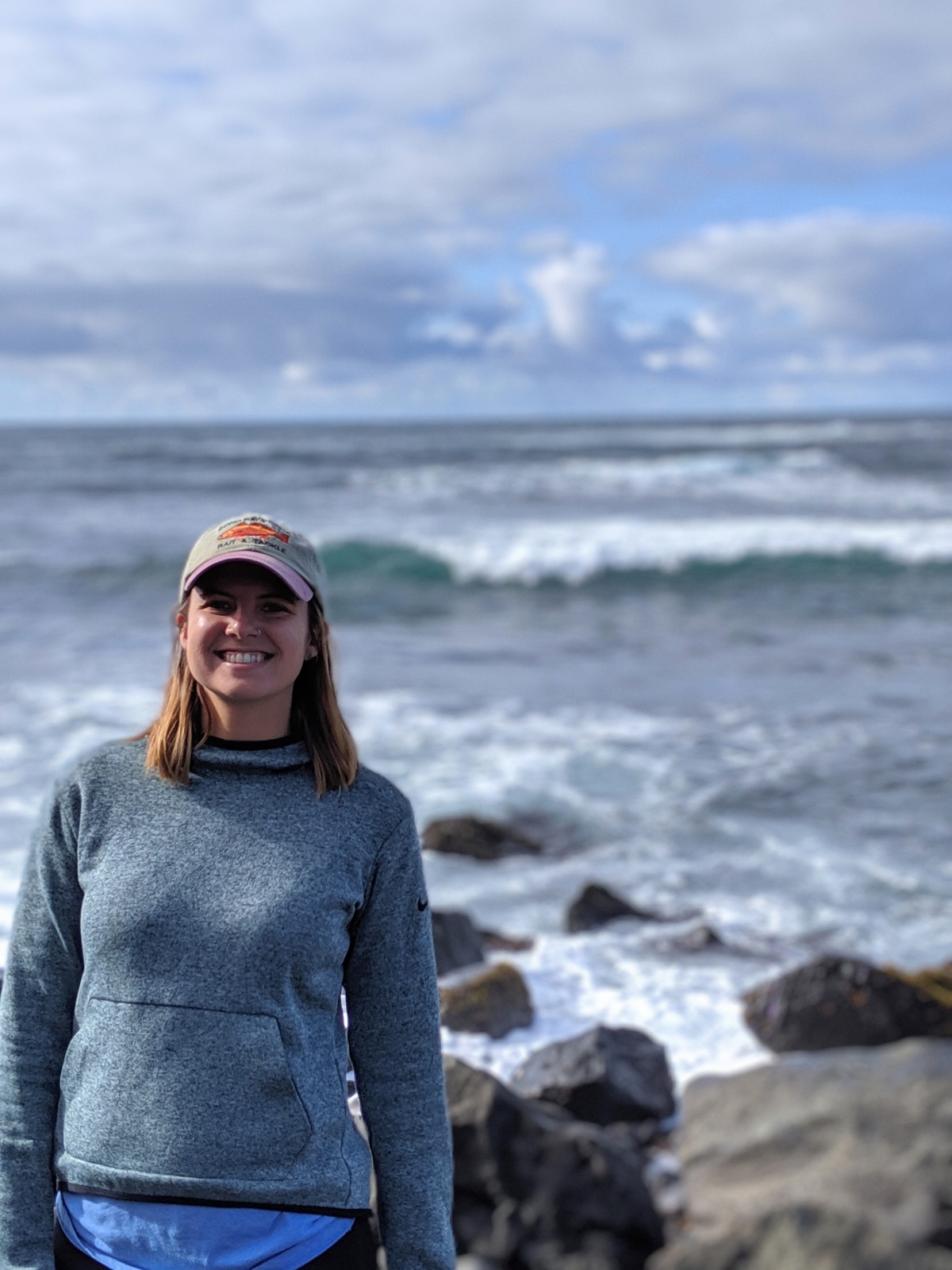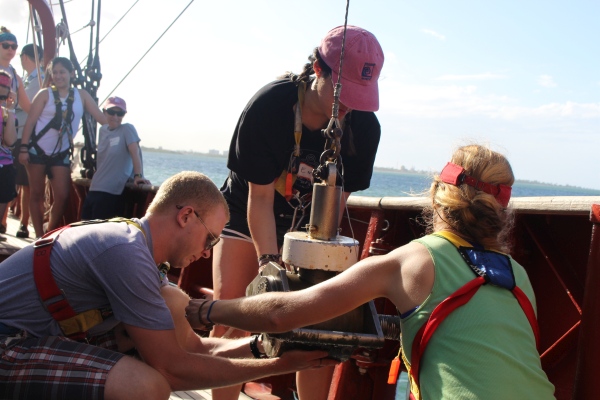By Emily Sun S’20
Emily is a recent graduate of Williams College. Her time in Mystic included long walks around the seaport, last-minute kayaking, and a wholehearted attempt at blacksmithing.
Katy Newcomer Lawson (F’12) has traveled far and wide. It’s one of the first things I notice in the About section of her website: the list of places where she’s worked spans coasts, countries, and even continents. In the course of her work as a marine scientist, Katy has been everywhere from the Chesapeake Bay to the coast of Maine, the Pacific Northwest to Panama, Alaska to Australia. When I give her a call one Thursday afternoon, I’m lucky enough to catch her while we’re both in the same time zone — I’m at school in Massachusetts; she’s working from home in upstate New York — and I can’t help but ask: which of those many places was her favorite?
“Favorites, that’s so hard!” Katy says. “There are so many good ones.” There’s the semester she spent studying abroad in Australia, just a hundred miles inland from the Great Barrier Reef. (“It was really immersive, because I took four classes on coral reefs,” Katy tells me. “I was like, if I’m going to be in Australia, I’m going to do it!”) There are all the times she’s gone scuba diving in the kelp forests off the coast of California. (As she describes the experience, I feel like I’m right there underwater with her: “It’s almost spooky,” she says, “but also very pretty, because the sun shines through and [it’s like] you’re swimming through a forest.”)
Then there’s the summer she spent in Florida, patrolling beaches for sea turtle nests. (“That was the hardest I’ve ever worked, walking on the beach in the morning every single day for miles.” “When you say morning,” I ask, “do you mean, like, 9 AM morning or 5 AM morning?” “5 AM morning,” Katy confirms, telling me she had to wake up at 4 to get to the beach on time. “But, I mean, I also got to see baby sea turtles that summer,” she says, smiling, “so pros and cons, really.”) There’s also the work she’s done in St. Paul and Sitka, Alaska, which Katy says might be her two favorite field sites of all time. (“It was so interesting to go there,” she says. “Very surprising ecosystems, very diverse — [with] starfish and giant urchins and all these fun invertebrate species.”)
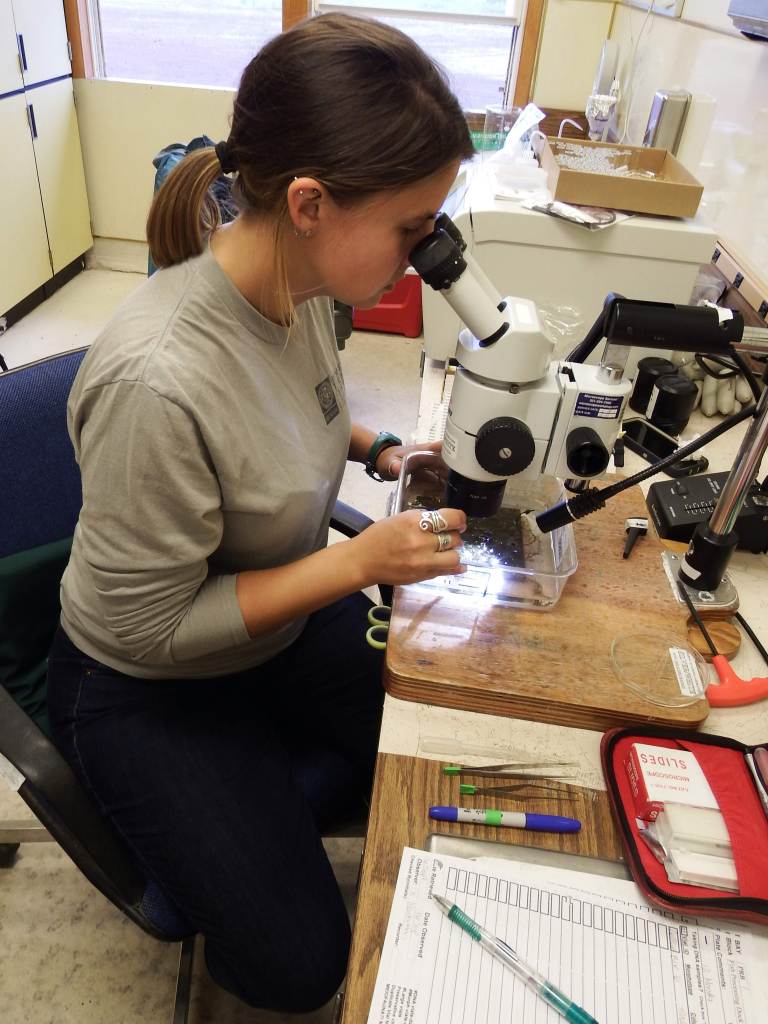
And the next destination on her list is equally exciting. If all goes well, next summer, Katy will be headed to Fiji, where she’ll continue to work on her PhD with conservation biologist Joshua Drew. The focus of Katy’s PhD research is marine biodiversity; she’s particularly interested in the invertebrate species that call Fiji’s coral reefs and mangrove forests home. Though her trip to those very sites was originally scheduled for this summer and had to be postponed, Katy has still been able to make progress on her project. She’s currently doing mathematical and statistical modeling work from home, while also looking forward to getting back out in the field. “That’s the part I really like,” Katy says, “is how hands-on it is. [With] marine fieldwork, when you’re out on the beach or on a boat, you feel like you’re [having] a very tactile experience.” Not to mention, she adds, of her upcoming trip, “I really enjoy traveling for work!”
But before most of that traveling — before Fiji, before Alaska and California and Australia — there was Williams-Mystic. Katy came to Mystic as an environmental studies major at Williams who had been interested in marine science since high school and a self-described “ocean girl” since long before then. “When I was looking at Williams as a college, I [wasn’t sure] if I wanted to [take] the liberal arts route or do a very marine-heavy undergrad,” she explains, “so Williams-Mystic helped convince me that I wanted to go to Williams.” It’s something the two of us have in common; as a senior in high school, I had the same dilemma and made the same decision. Something else we share: both of us remember the field seminars as one of the best parts of Williams-Mystic. We exchange stories about the offshore trip, which Katy tells me was her favorite, “because it was the most unlike anything I’d ever done before.” I’ve never really been able to put the magic of that trip into words, but Katy does it perfectly: “To keep waking up at sea was [just] an amazing experience.”
“And then [the] Louisiana [field seminar] was [also] great,” she continues. During that trip, “we stayed at LUMCON,” the Louisiana Universities Marine Consortium, “which is a field site that’s also a lab. Basically, it was like a professional field location, and I’d never been to one before. [So] to experience that, where it was like — here are the scientists who work at this lab, and they do science for their job, 9 to 5 — I [just thought], that’s really cool! That’s a dream!” Back in Mystic, Katy had the chance to try out that dream for herself. She began working as a research assistant in the lab of professor emeritus (and former Williams-Mystic director) Jim Carlton. “Jim was a huge influence,” Katy tells me now. “You know, I still [study] invertebrates, which are his specialty. And I started [my career] in an invasive [species] lab that he helped found, so I’m definitely super thankful to have gone to Williams-Mystic and learned from Jim and everybody else there.”
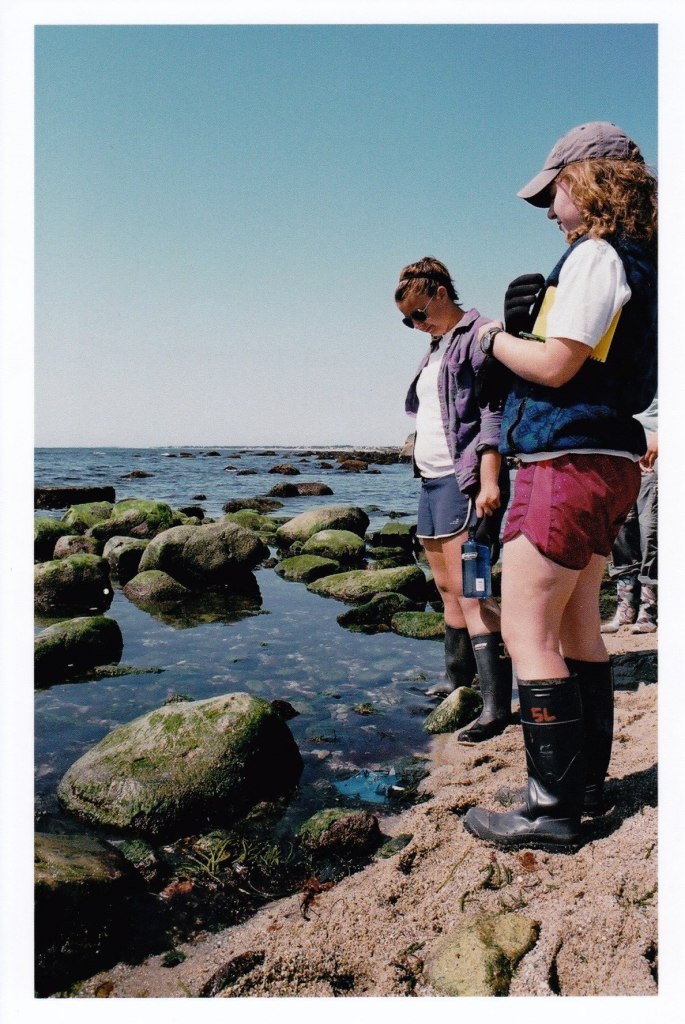
One especially memorable learning experience, Katy says, was the research project she did when she returned to Mystic the following summer, to continue working with Jim and one of his then-PhD students. “We’d found something in the field that was really interesting,” she says, “which was that anemones were producing eggs for a reason we didn’t understand, because they were asexual. And we were like, ‘Why? We thought you were asexual!’” So Katy used her histology skills — which she’d recently honed in Australia, studying corals (what else?) — to analyze the tissue of the anemones and “figure out if they had eggs, if they had sperm, what was going on.” She pauses for a moment here, and, enthralled, I ask: What was going on? Were they really asexual?
“Yes, they were really asexual!” Katy says. “It was a totally female population — there were no sperm-holding anemones. We think it’s because they’re invasive, and they probably haven’t lost the capability to reproduce sexually from their original population — but that only one individual was transported to Mystic, [and] it was a female. And so now every single anemone in Mystic is a female,” she explains. “Other researchers also discovered this around the same time, and found other populations that are only male, [or other] female-only populations. [But] there are [also] populations that have both, and so people are trying to see if they’re going to reproduce sexually. It’ll be interesting,” she continues, “because they’re so successful [as a species] without [sexual reproduction]. But if they recombine and are able to adapt and evolve as a [typical] population might, then they [could] become even more prevalent — who knows?”
The anemone project — which ultimately turned into Katy’s undergraduate thesis — exemplifies what she says she loves most about doing research: asking questions and finding ways to answer them. “I have a lot of fun designing research questions and thinking up what we want to test and why it’s important,” she says. “And going through the process of trial and error in the field — I really enjoy that part of it.” I’m curious about what that process is like, never having been through it on my own. Katy nods: “I think it’s hard to get experience doing that until either you have an independent project or you work on a project with somebody [else] from start to finish. But it’s definitely one of the most surprising things I’ve learned [about research], is that it’s very iterative. Because there are so many things in the field that can affect your project, like weather, waves, currents, other animals, other humans… So you have to kind of think of solutions on the spot and be ready for almost anything to happen.”
“And it can be really nerve-racking the first time it happens to you,” Katy tells me. “Like, [for] my first internship project, the animal I was trying to study didn’t come that year — they [just] didn’t settle in that location that year — so when I got there, [and] I saw barnacles instead of bryozoans, I was like, ‘Oh. Well, my study is now on barnacles!’” Katy laughs. Despite the challenges, it seems like everything worked out in the end. That barnacle project took place while Katy was an intern at the Smithsonian Environmental Research Center (SERC), where she later became a full-time lab technician. She gives credit to Williams-Mystic for helping her get that initial opportunity: “I definitely would not have gotten the internship at [SERC] without [my] experience working with Jim,” she says. “And then the research I did [with him] for my thesis” — the aforementioned anemone project — “turned into a paper, so that was my first big publication — which was probably [also] very impactful, [to have that] on my resume [when I applied] to grad school.”
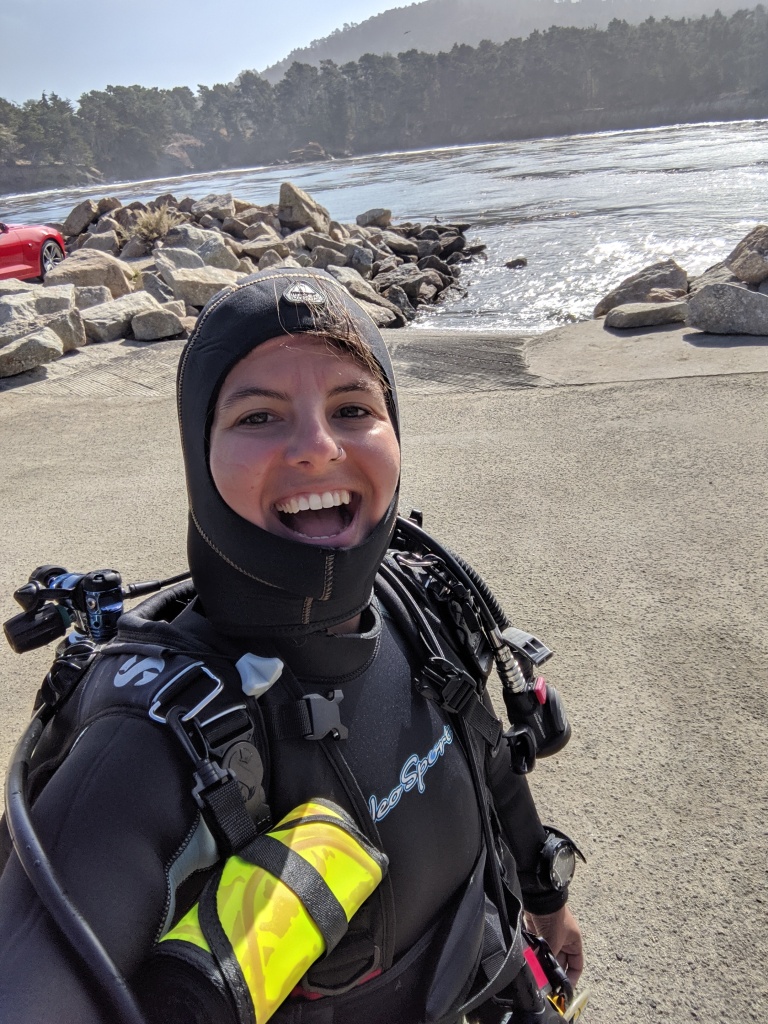
I ask Katy if there are other ways in which she thinks Williams-Mystic has shaped her life since. “I mean, I met my husband [there],” she says with a smile, “and I made really great friends [who] I still talk to and hang out with a lot.” (She remembers paddleboarding on the Mystic River in the summer, going to Clyde’s for apple cider donuts in the fall — the foundation for friendships that are still going strong, even now, years later.) Though some of her favorite memories are from time spent outside of class, Katy tells me she really enjoyed her courses, too. She admits to having a favorite — “as a science person, I was obsessed with the ecology class” — but says she also appreciated “the way all [the classes] intersected, how they all built upon each other.”
Looking back on her coursework as a whole, Katy says, “I think the immersion of [all] the different courses helped expand my view of doing marine science. You know, it can be anthropological; it can be community-based. It’s not just science alone — there’s this whole other huge part of knowing about the marine world that’s not based in the research, it’s based in the human systems. So I think that’s had a big impact on the way I think about things.” For example, Katy recalls, “When we went to Louisiana, I was always amazed at how close the connections were between some of the professors at Mystic and some of the people [we met] in Louisiana. I thought that was so impressive, to have collaborators who they’ve [known] for like twenty years, who they’re friends with and who live in that community.”
Today, Katy hopes to build similarly strong connections through her own work. For the ongoing Fiji project, she says, “we do a lot of collaboration with the local indigenous community. [We] try to focus on what they’re interested in studying [and] develop research questions that might further their own interest in the conservation process. For example, there are a lot of services that they value more than the Western community [does], like sustenance fishing or traditional uses of mangrove wood. So we want to try to develop study questions that support those kinds of values.” It’s important, she says, to focus on projects that are not only of scientific interest, but also of value to the surrounding community — and it’s equally important to work with local collaborators, to ensure they are involved with and invested in the research being done.
Katy’s belief that science should be accessible and inclusive extends even beyond the immediate community, into the wider world. “I think [doing] outreach is a really important part of any scientist’s job,” she says, whether that means giving talks, using social media, or finding other ways to share science with the public. In addition to keeping people informed, Katy also wants to help them join in research efforts themselves, as citizen scientists. “I really enjoy that, connecting people to projects and getting them involved,” she says. “I think people are more keen than we think. There are plenty of people who [want to] help, and it’s super beneficial for science [for the public] to have a [better] understanding of what we do.”
While at SERC, for example, Katy helped develop an online citizen science project called Invader ID. The goal of the project is to study fouling communities, which are made up of organisms that live underwater on artificial surfaces, such as docks and ship hulls. As a volunteer, you can access photos that SERC has collected of these organisms, then try your hand at identifying them. Katy says Invader ID “gets people interested in [species] that they would maybe never see,” like tunicates and tubeworms. “But also,” she adds, “it helps us track [these] communities through time. So we can put up [photos] from the early 2000s that we never got around to analyzing, and if the public identifies [the species in them], then we have a data point that we would have never been able to get [otherwise].” To date, more than 5,000 volunteers have contributed to the project. And Katy thinks that, in general, participation in similar citizen science efforts is on the rise. When I ask her how she sees the field of marine science changing, either in the present or in the years to come, she says, “I think more people are expressing interest, and I think more scientists are recognizing that it’s important to [reach out to them] actively.”
“And then with that,” she continues, “I think [science] is becoming more localized. People are realizing, like, to just go to a far-flung place, do research, and come back — and not learn about that place — is maybe a bad idea. You should be more aware of where you’re going, what you’re doing, and how that data is related to that place and those people. And [you should] really connect with the community there and the public in general.” It’s an area where Katy acknowledges that scientists, on the whole, have lots of room for improvement — but she’s optimistic that things will change for the better.
To me, it’s clear that Katy herself is at the forefront of that change, given how closely her work in Fiji is tied to the local community. In addition to the ecological fieldwork, Katy’s project also has a major sociological component. She says, “[One of the questions] that I’m asking is, in high biodiversity sites — assuming biodiversity is a proxy for healthy ecosystems — do people appreciate more ecosystem services, and do they value those [more highly]?” Through surveys and interviews, Katy will work to better understand the local community and its relationship with the environment, in order to make sure that local priorities are taken into account. When designing a research project, Katy says, “it’s important to make sure that you’re not doing [one thing] when the community thinks there’s something [else] that’s more important. So it’s a balance” — a balance she is working hard to achieve.
What’s next for Katy after Fiji? “I’m getting more into this idea of connecting the community with the ecosystem,” she says, “so I think I’m going to try to do projects that are more local to me. That could mean in the Great Lakes region, or it could mean coastal New York, [or even] up to Maine, where there are a lot of local towns that are really invested in the lobster, scallop, and [other] fishing industries. So that’s what I hope to do next, because I want to have that connection to place.” And at the end of the day, it’s that same connection to place that Katy emphasizes when she talks about her time at Williams-Mystic. One of the last questions I ask her is this: In just a few sentences, how would she describe the program?
“I think you just really live in that place,” she says. “You live in the world of [a] New England, ocean-based lifestyle, and you learn a lot about the ocean from the perspective of a coastal community, even if you’ve never been [part of that community before].” (Katy herself grew up in Georgia. “On the coast?” I ask her. “Nope!” she says, smiling. “Anywhere near the coast?” “Nope,” she says again, laughing now. “Central Georgia. My family went to the beach during the summer, but that was it.”) In Mystic, though, “you [really] experience the water,” she says. “You live there on the water, you learn all about the water, you go other places with water — and it’s great. I loved every minute of it.”

